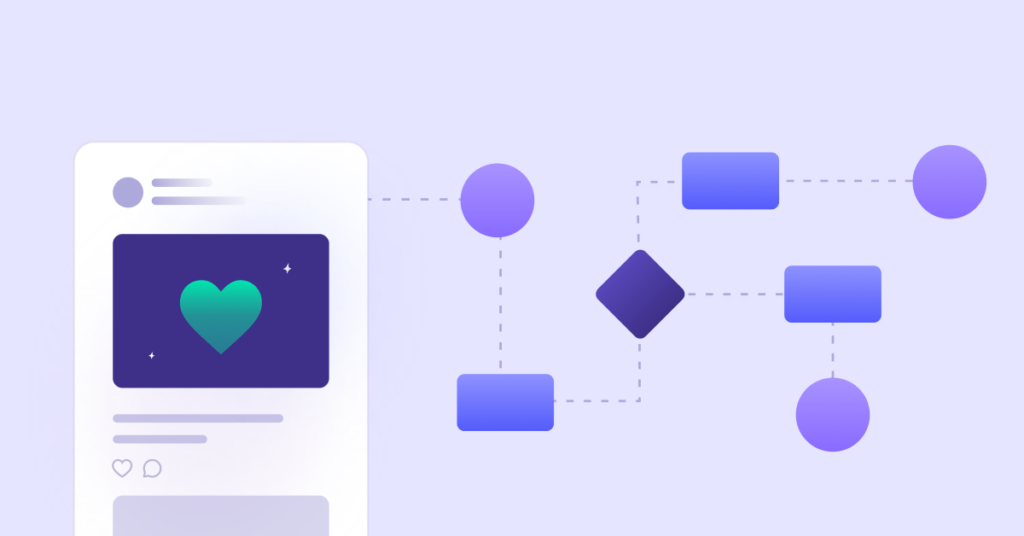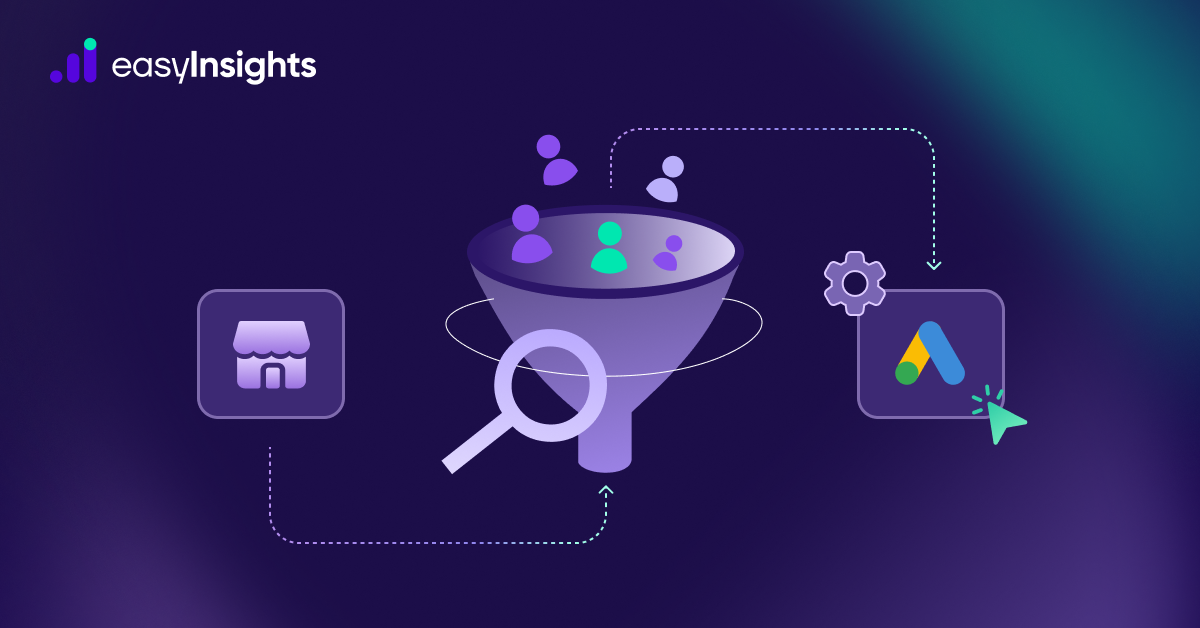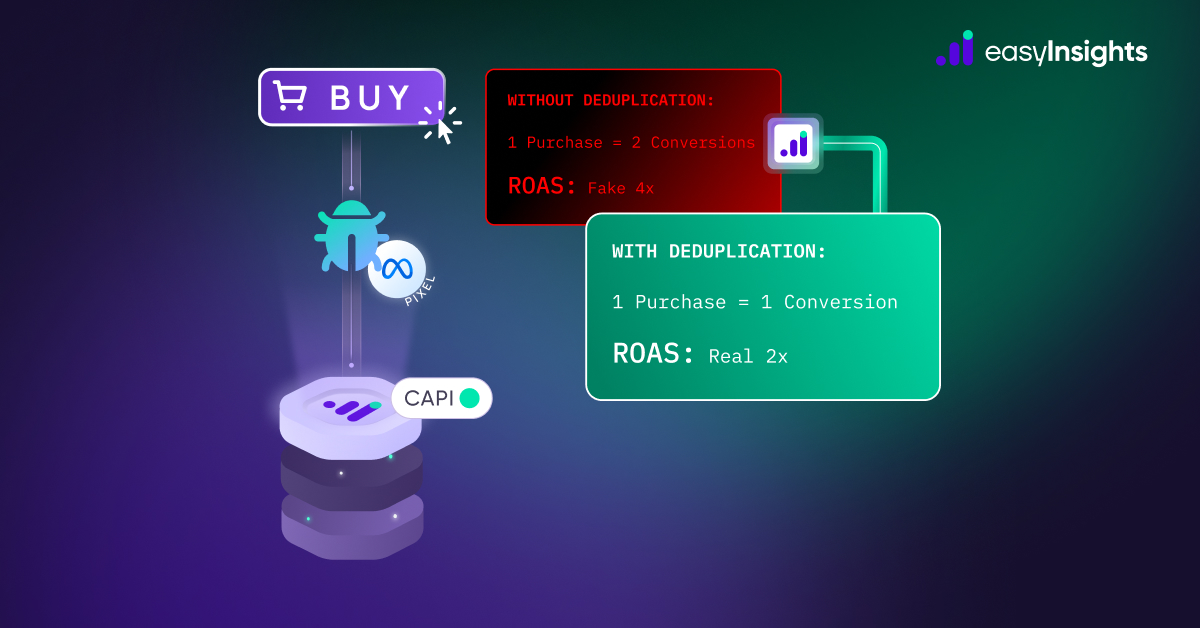
The algorithm is the invisible hand that guides the virality of content on social media. It is the set of rules that ranks content on the platform and recommends it to users. Social media algorithm factors in user behavior, interests, and ranking signals to serve relevant content and keep users engaged. If you can crack these rules, you can easily create content that goes viral and find bigger audiences. But it’s easier said than done because social platforms tweak their algorithms frequently.
These updates are necessary to accommodate the ever-changing trends and the audience’s evolving interests. Moreover, these changes encourage users to innovate and produce unique content consistently. So, what brings views and likes today may lose traction tomorrow. That’s why marketers must always be on the lookout for algorithmic changes across different social channels.
In this blog post, we’ll explore how social media algorithms work on popular platforms to help you stay ahead in the ever-changing social media landscape.
Jump ahead to:
How does Social Media Algorithm Work?
Today, more than 4.5 billion people across the globe use social media. And if marketers can tap into how social media algorithms work, they can create content that gets more visibility. So, let’s see how algorithms work on some of the most popular social networking sites.
1. Facebook’s Social Media Algorithm
Facebook, as you know, is one of the oldest social networking sites. It was the first site to feature a live feed, which influenced other platforms that followed. While many consider Facebook to be losing relevance, it still got around 3 billion active monthly users in April 2023.
Facebook’s algorithm takes into account these ranking signals to calculate the relevancy of content:
- User’s friends list, groups, and pages they follow
- Type of content (status, image, video, etc.)
- The recency of the post
- Likes, shares, and comments on the post
- Past performance of the page
Owing to the growing popularity of TikToks and Reels, Facebook tweaked its algorithm recently. As of February 2022, the platform prioritizes short-form videos, reels, and stories at the top.
As for the main feed, users now see more video content over status updates and images that Facebook was once known for. So, if you want to grow your brand on Facebook, post more videos, especially short videos in reels and stories.
Additional Read: Creating Facebook Dashboards in Looker Studio
2. Instagram Algorithm
Facebook’s sister platform, Instagram, was all the rage when it launched, for users could click photos, use filters, and share them with their followers. Over the years, Instagram has included videos, stories, and reels. It is the fourth most popular platform and its total user count is rapidly growing towards 2.5 billion.
Explaining their algorithm’s working, Adam Mosseri, the head of Instagram, revealed they use a variety of algorithms, classifiers, and processes, each with its own purpose. Basically, they have a unique algorithm for each section of their app.
For instance, to rank content for feeds and stories, Instagram looks at:
- Information about the post: These signals look at the details, like when it was posted, from what location (if tagged), and how many likes it has. If it’s a video, the duration also becomes important.
- Information about the person who posted: This includes signals like how many times audiences have interacted with the creator in the past few weeks.
- Audience’s activity: These include signals such as how many posts a user has interacted with using likes, shares, and comments.
- Audience’s interaction history with similar accounts: This factors in the probability of a user interacting with an account. For example, how likely two users are to comment on each other’s posts.
As for the Explore section, the algorithm is very similar to the one used for feeds. However, it gives more importance to the user’s interaction history with the person who created a post. That is because, in most cases, users don’t follow each other.
When it comes to Reels, Instagram again looks at the creator’s information, audience’s activity, interaction history, etc. But it also defines the relevance of the video with duration, audio track, and popularity.
3. YouTube’s Social Media Algorithm
Today, video content has become synonymous with YouTube. Be it via smartphone app or website on desktops; over 2 billion users are on the platform. That also means that the platform attracts a lot of user-generated content, 500 hours of content/minute to be exact.
The YouTube algorithm first creates an outline of user preferences to ensure that users only see the relevant content based on factors like:
- Watch history
- Time spent on videos
- Likes, dislikes, and shares
- Subscriptions
Then, it supplements that data with its algorithms for content suggestions in different sections of the platform. Let’s have a look at them:
- YouTube Homepage: The homepage algorithm considers the audience’s preferences, like channels they subscribe to, topics they follow, watch history, interaction with similar videos, and the number of times a video has already appeared on the homepage.
- YouTube Search: Search is where users enter a keyword or phrase and get video suggestions. So, naturally, YouTube looks at titles, descriptions, and content quality to establish relevance for a video in accordance with the search query.
- Next Video: While a user watches a video, YouTube analyzes the current video on factors like duration, topic, category, and the user’s watch history to suggest the next video to watch.
Following the footsteps of Instagram and Facebook, YouTube also added support for vertical short-form videos through what it calls Shorts. It even has an algorithm to recommend these shorts to users.
It relies on all the usual signals like watch history, relevance, and similar content to recommend a short video to users. The platform also tracks when users view a short or swipe away to gauge their interests accurately.
Additional Read: The Ultimate Guide to YouTube Analytics
4. The LinkedIn Algorithm
With over 900 million members, LinkedIn is known for its professional network, making it a perfect platform for B2B brands to build an audience. Like other platforms, it has its own algorithm to suggest content to its users, which takes into account the following:
- Connections: Firstly, the LinkedIn algorithm looks at the user’s connections and their level of interaction with each other.
- Actions: Then it considers signals such as groups joined, pages and hashtags followed, and posts a user interacts with.
- Post Quality: Next, it analyzes every new post’s quality based on early engagement, like reactions, comments, and shares. It also looks at the number of flags and hides on a post. Depending on the quality, it marks a post as spam, low-quality, or high-quality.
- Human Review: If the algorithm can’t filter the content, LinkedIn uses a manual filtering process. Here, a LinkedIn employee reviews the post for spam and other violations. If it passes the review, the post remains visible on the platform.
5. X (Twitter’s) Social Media Algorithm
Twitter (now known as X) is very different from the other platforms in this list. It started as a micro-blogging platform where users can post their thoughts in 120 characters. But today, users can tweet 240 characters, including images and videos. In July 2023, the platform saw 541 million active monthly users.
Twitter has posts divided into three sections: Home, Latest Tweets, Trends, and Topics. It uses the following ranking signals to serve relevant content to the audiences:
- Interaction: This factor comprises signals such as accounts users follow, tweets they like, retweets, and comments. As for Topics, the algorithm looks at the topic added by the user as their interests.
- Recency: Twitter’s algorithm prioritizes fresh content, so it looks at when a tweet was posted to recommend it in the Home, Latest Tweets, and Trends sections.
- Popularity: The level of activity around a topic or tweet also affects its visibility. As mentioned earlier, recency plays a crucial role in Twitter’s algorithm. So, popularity is measured in real time.
- Location: Trending topics that a user sees are greatly impacted by their location and the location where the content originated.
Additional Read: X (Twitter) Ad Campaigns – The Most Important Metrics to Track and Optimize
6. TikTok’s Social Media Algorithm
TikTok is a very new platform. But it is the reason why Facebook, Instagram, and YouTube introduced short videos. TikTok made vertically recorded videos that lasted 15 seconds, a popular medium of expression. At present, the platform has one billion monthly active users.
It is also unique in how its algorithm rates content. It does not take into account the follower count of an account to suggest their content. If the content is relevant and high quality, it will be visible.
Besides, here are some signals that TikTok uses to suggest content to its views:
- User’s Profile: Firstly, the TikTok algorithm understands the user’s preferences based on accounts followed, previous interactions, and content that is hidden or marked as not interesting.
- Content Details: Next, it analyzes the features of the content being posted. It looks at the topic’s relevance, whether it is trending or not. Next, it also looks at factors like soundtrack, effects, and captions.
- Location and Language: Users are more likely to see content that originates from their country or is in their language.
- Features Used: TikTok’s algorithm prioritizes the content that uses the platform’s built-in features over the content created and edited on other platforms. It encourages users to remain in the app and use native sounds and effects to create content.
7. Reddit’s Algorithm
Reddit is known for online communities centered around topics, celebrities, brands, cultures, etc. At present, the platform averages over 430 million monthly active users. And compared to the other platforms, Reddit keeps its algorithm very straightforward.
Reddit’s algorithm relies on these three signals to suggest content to its users:
- User Profile: It looks at communities, topics, and posts a user has interacted with in the past to predict what type of posts they may like.
- Recency: The time of submission is also an essential factor in deciding the relevance of a post. New posts always rank higher.
- Upvotes and Downvotes: Next, Reddit’s algorithm considers upvotes and downvotes to establish the relevance of posts. Early interactions on posts also play a crucial role in pushing a post.
- Contextual Sorting: Besides that, Reddit sorts posts into categories like New, Top, Hot, Rising, Controversial, and Best. Users can use these categories to filter the content of a subreddit.
8. Pinterest’s Algorithm
Pinterest is a unique platform as it has grown to become a search engine for images. As a result, its algorithm is unlike any other social media platform we’ve covered so far.
Pinterest algorithm establishes a pin’s relevancy based on engagement metrics and shares. However, similar to SEO for search engines, it also considers the keywords used with a pin when ranking it.
Here is a detailed overview of factors that affect a pin’s ranking:
- Pin Engagement: The Pinterest algorithm prioritizes quality pins for top positions. For that, it looks at engagement metrics for each pin you create, such as the number of likes, comments, shares, and saves.
- Pinner Behavior: The algorithm also considers the pinner’s behavior on Pinterest to recommend their pins to others. It looks at factors like how often you pin and how you engage with the audience. Basically, more active pinners get better results.
- Domain Quality: Pinterest lets users add their website and claim a domain. So, the algorithm also assesses the popularity of pins coming from your website when recommending your pins.
- Topic Relevance: When audiences search for a pin, the algorithm looks at keywords and hashtags used in titles and descriptions in a pin to determine if a user would be interested in seeing it.
Additional Read: 6 Social Media Optimization Strategies That Will Change Your Game
Streamline Social Media Analytics with EasyInsights
That wraps up our guide on social media algorithms. We can see that all these algorithms use similar ranking signals to suggest content to their users. In most cases, user preferences, interaction between creator and audiences, recency of posts, and early engagements play a crucial role in ranking content.
Cracking the code of these algorithms requires a robust content strategy with constant testing and performance tracking. While the marketer in you can take care of content, measuring its performance across multiple channels is a hassle. But no worries, EasyInsights has you covered.
EasyInsights lets you collect data from over 50 sources, including social media platforms, website analytics, CRM, and more. You can transform and harmonize data using data views within EasyInsights as well. You can also export collected data to any BI tool for reporting.
Book a demo today to see EasyInsights in action!











